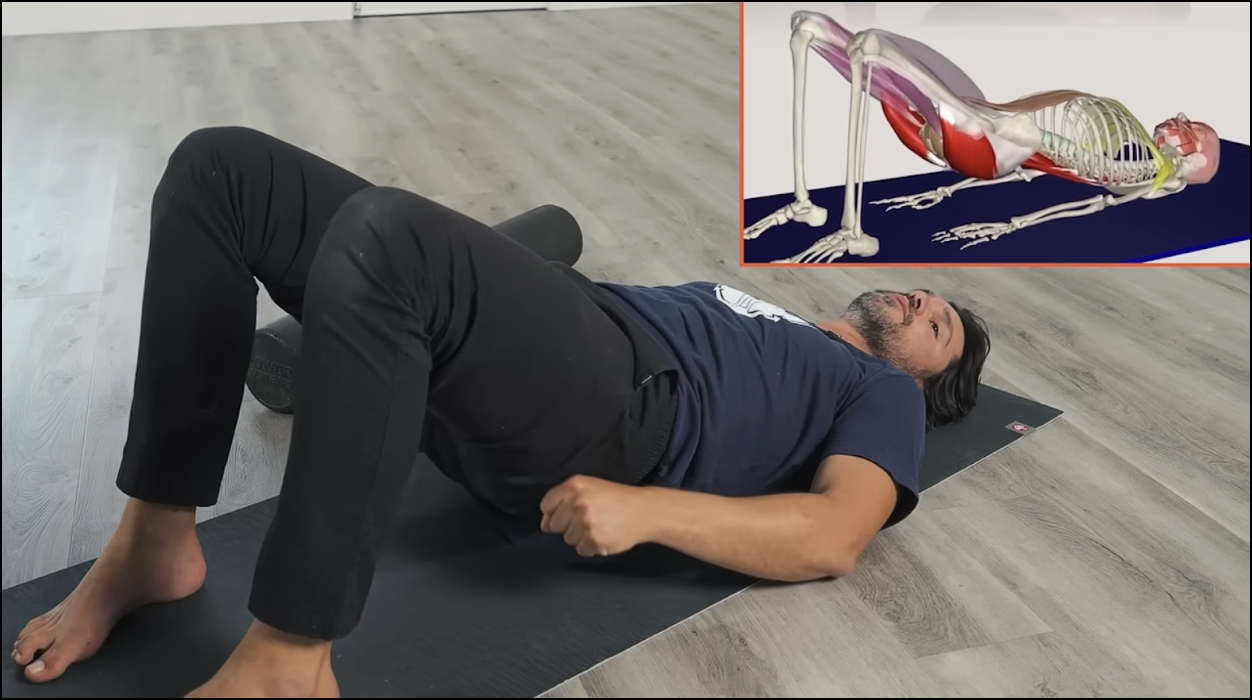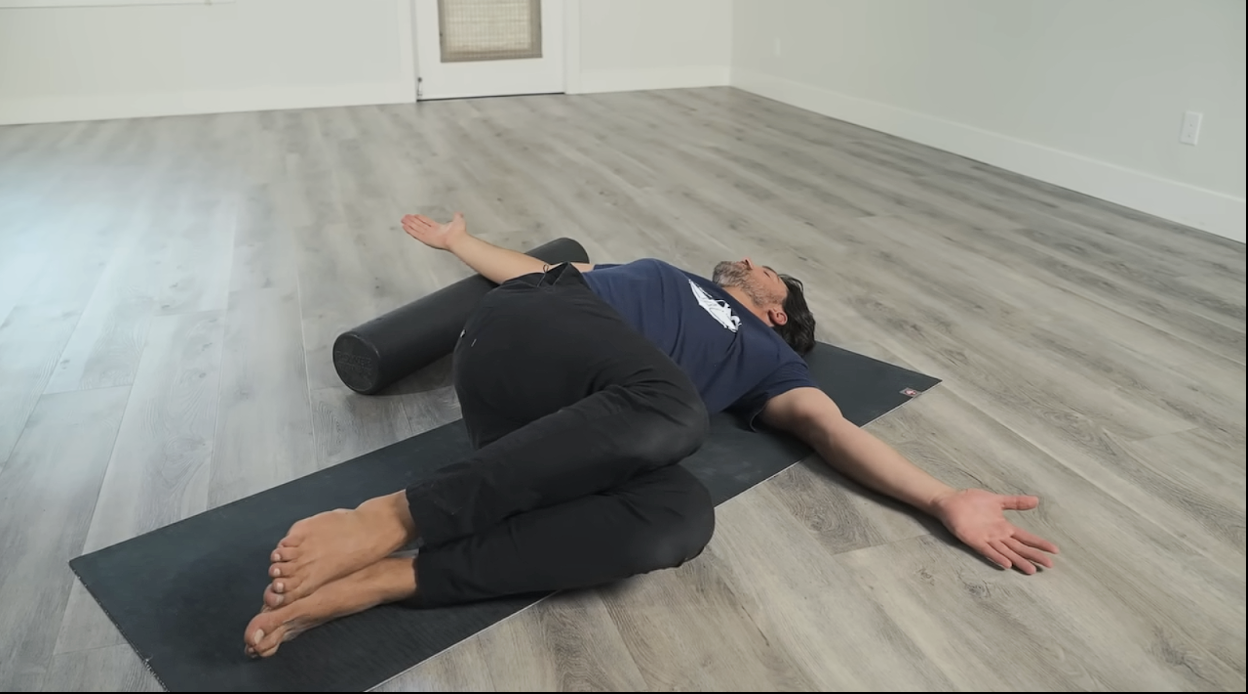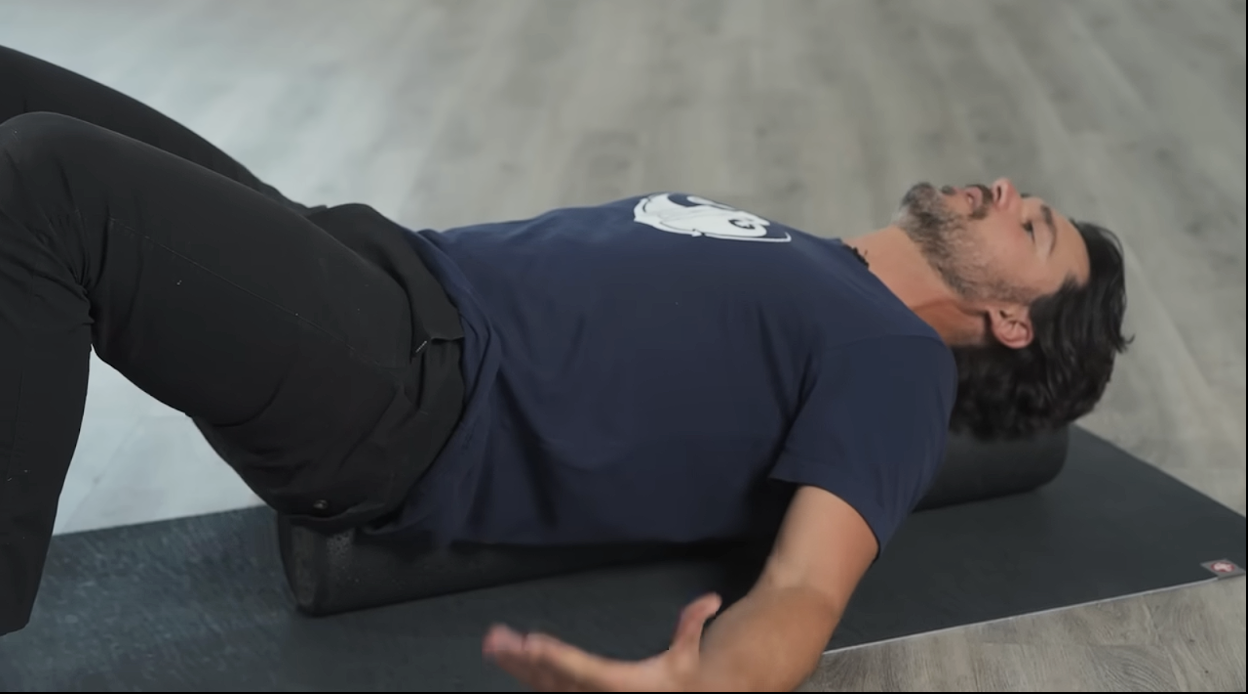How to Decompress Your Lower Back with These Easy Exercises
Oct 12, 2025
How do you decompress your lower back? Let’s walk through these 7 easy exercises.
I know you feel like your lower back is carrying the weight of the world. You sit all day, stand too long, or maybe just wake up stiff for no reason. That tight, compressed feeling in your spine is all too common and it doesn’t take fancy equipment to find relief.
Today I’m walking you through my favorite spinal decompression exercises. You don’t need a gym. All you need is a yoga mat, a foam roller, and a few minutes. Let’s dive in.
1. The 90-90 Core Activation (aka “Rolling in the Mud”)
Start by lying on your back with your knees bent at 90 degrees. Engage your core, this is key. Then slowly rock side to side, letting your lower back muscles gently massage against the floor.

The science here? When you activate your abs, your lower back muscles naturally relax. It’s called reciprocal inhibition, but really, it just feels like a release.
Pro tip: when I do this with my son, we call it rolling in the mud. It makes the exercise fun—and it reminds you not to take your back pain routine too seriously.
2. Glute Bridge (But Don’t Go Too High)
From that same 90-90 position, plant your feet and gently lift your hips. Keep the movement small, you don’t need to arch way up. The goal isn’t a big bridge; it’s glute activation.

Here’s why: when your glutes fire, your tight hip flexors let go, and that takes pressure off your spine. Just remember to breathe and keep your core engaged so your back doesn’t complain.
3. Open Book Stretch
Roll onto your side, arms stretched out in front of you. Slowly open your top arm like you’re flipping a page in a giant book, letting your chest rotate open.

This one works magic on your thoracic spine (upper back). And here’s the deal—if your upper back is stiff, your lower back ends up doing all the extra work. Free up your thoracic spine, and your lumbar spine will thank you.
4. Parallel Spine Foam Roll
Now grab your foam roller and lie on it lengthwise so your whole spine rests on top. Arms open wide, palms up.
The roller supports your spine without squishing the muscles along it, which encourages blood flow and relaxation. Just breathe here. Over a few minutes, you’ll feel your posture melt open. Add a gentle sway side to side for a little self-massage.

5. Thoracic Extension on Foam Roll
Turn the roller perpendicular under your upper back. Support your core so your lower spine stays protected, then gently arch over the roller one vertebra at a time.

Think of this as a DIY chiropractor. It’s a self-mobilization technique that unlocks stiff joints in your thoracic spine. You can adjust the position higher or lower along your back to hit different spots.
6. Sacrum Support Roll
Slide the roller under your sacrum (the bony area at the base of your spine). Gently bring your knees up, resting your hands on them without pulling.

This creates a subtle inversion that eases pressure in your lower back and pelvis. If you struggle with SI joint issues, just make sure this one feels good—don’t push through any pain.
7. Child’s Pose with Foam Roll
Finish in a modified child’s pose. Kneel, place the roller under your forearms, and slowly reach it forward as you drop your chest toward the floor.

The key: keep your core slightly engaged so your lumbar spine doesn’t collapse. You want the opening to happen in your thoracic spine and shoulders. Breathe deeply here, it feels amazing.
Putting It All Together
You can flow through these seven exercises in sequence or just pick the ones that feel best for you. None of them should cause pain; they should all feel like your spine is finally exhaling.
These are my go-to decompression moves. Done consistently, they can help you release tension, restore mobility, and keep your back from feeling weighed down.
Give them a try tonight. Roll in the mud, open the book, melt into the roller, and see how your back feels after. Check out our 7-day free trial of Core Balance Training for more exercises like this to help your lower back pain.
Until next time, get down on the floor, connect to your core, and keep moving.














